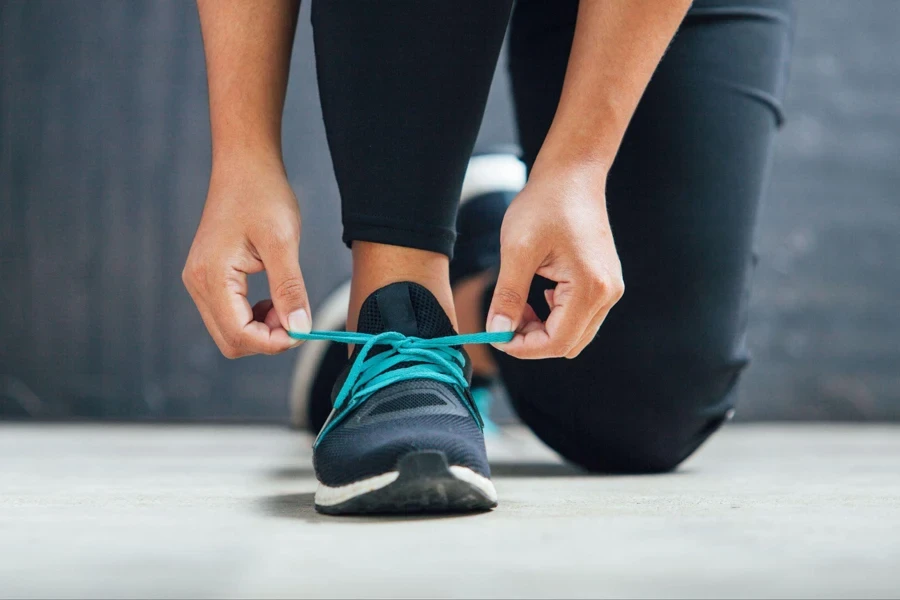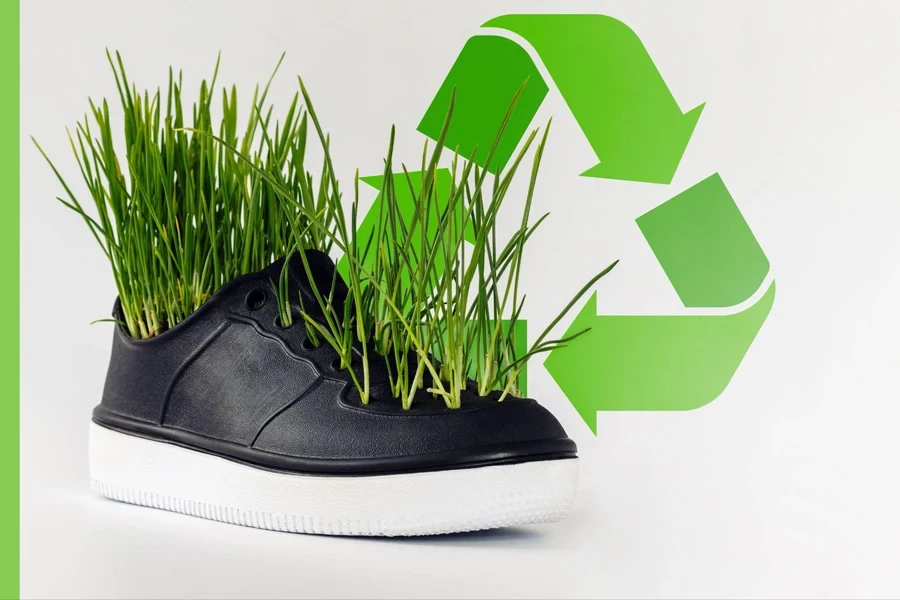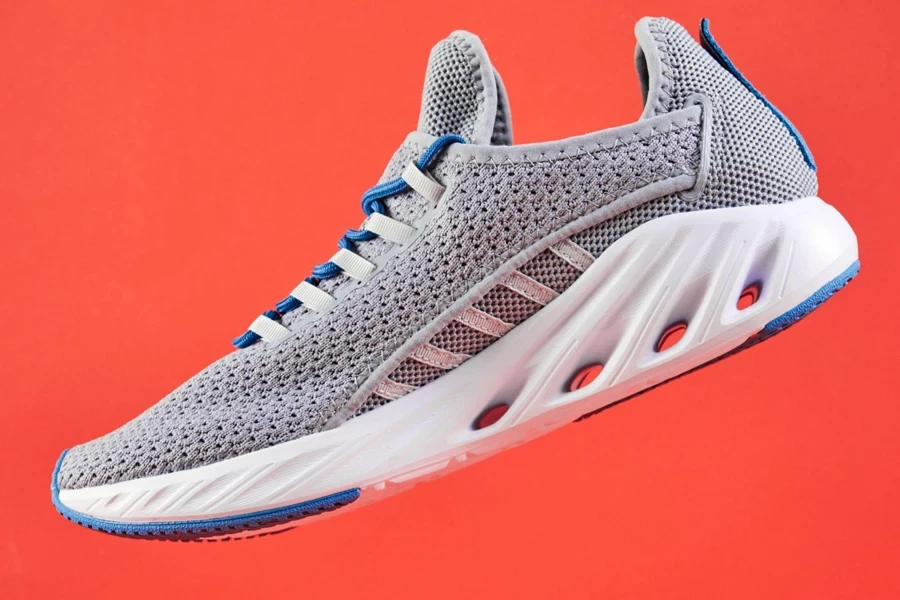Table of Contents
– Introduction
– Running Shoe Market Dynamics
– Running Shoe Trends
– Conclusion
Introduction
The world of running shoes is constantly evolving, with brands pushing the boundaries of innovation to provide runners with the best possible experience. As we look ahead to 2024, several exciting trends and advancements are set to revolutionize the running shoe industry, catering to the diverse needs of runners across all levels.
Running Shoe Market Dynamics
The global running shoe market is expected to reach USD 13.1 billion by 2032, growing at a CAGR of 3.4% from 2023 to 2032. The US running shoe market alone is projected to reach USD 17.23 billion by 2028, with a growth rate of 2.90% between 2024 and 2028. This growth is driven by factors such as increased participation in running events, a focus on fitness and wellness, and continuous technological advancements. The U.S., Japan, China, India, Germany and the U.K. are important markets for running shoes.

Asia-Pacific is the most significant shareholder in the global footwear market and is anticipated to exhibit a CAGR of 5.01% during the forecast period. In 2021, Asia-Pacific dominated the athletic footwear market with a revenue share of over 35.0%. Europe is estimated to exhibit a CAGR of 4.4% over the forecast period in the footwear market. The U.K. athletic footwear market was valued at USD 7.0 billion in 2021. North America is estimated to grow at a considerable pace in the footwear market. The rise of the running shoe industry in North America will be encouraged by growing e-commerce penetration in the United States and Canada between 2022 and 2030.
The major players in the global running shoes market include: Nike, Adidas AG, ASICS Corporation, New Balance Athletics, Saucony, Brooks Sports, HOKA ONE ONE, Puma SE, Under Armour, Skechers U.S.A., Mizuno Corporation, Reebok International, Salomon S.A. Nike is the clear market leader in the global sneakers market, with footwear sales of $29 billion (plus $2 billion from Converse) in fiscal year 2022. Brooks has a 25% market share in running shoes, followed by HOKA at 24%, New Balance and ON at 10% each, Saucony at 9%, ASICS at 7%, and Oofos at 5%.
Running Shoe Trends
Sustainable Materials and Manufacturing
One of the most significant trends in running shoes for 2024 is the shift towards eco-friendly materials and sustainable manufacturing practices. Brands are increasingly incorporating recycled materials, such as recycled polyester and rubber, into their shoe designs.

Adidas has introduced the Futurecraft.Loop, a fully recyclable running shoe made from a single material – 100% reusable TPU. It’s spun to yarn, knitted, molded and clean-fused to a Boost midsole using Adidas’ Speedfactory technology. Once the shoes come to the end of their first life and are returned to Adidas, they are washed, ground into pellets and melted into material for components for a new pair of shoes, with zero waste. Nike is also making strides in sustainability, recovering 31 million water bottles from landfills and ocean plastics since 2019 for use in their shoes which feature up to 75% recycled materials. They are working to reduce carbon emissions and water waste in manufacturing.
Reebok has launched plant-based running shoes like the Forever Floatride GROW, with an upper made from eucalyptus, midsole from castor beans, and outsole from natural rubber. Their goal is to create a range of plant-based shoes that are easy to compost once discarded. Other brands like Allbirds use materials like merino wool, eucalyptus tree fibers, sugarcane, and recycled plastic bottles to craft their eco-friendly running shoes. On Running has also committed to sustainability, aiming to create products from 100% recycled materials after 2022.
The use of alternative materials like algae bloom foam, hemp, organic cotton, and materials made from agricultural waste like rice husks and corn are becoming more common as brands look to reduce their environmental impact. While completely biodegradable running shoes are not yet feasible due to performance requirements, the industry is making significant progress towards more sustainable practices and circular manufacturing models to reduce waste.
Responsive Cushioning Technologies
Cushioning technology continues to evolve, with brands developing more responsive and adaptive midsole materials:

Nike’s ZoomX foam, featured in the Alphafly and Vaporfly models, offers exceptional energy return and lightweight cushioning. ZoomX is Nike’s most responsive foam, delivering 85% energy return and providing a propulsive sensation in every stride. This technology has powered record-breaking performances in major marathons. Asics’ FlyteFoam technology, used in the Novablast and Metaracer shoes, provides a soft yet responsive ride. FlyteFoam is 55% lighter than standard EVA foam while maintaining excellent bounce and durability.
The Novablast 4 features FF BLAST PLUS foam, an updated version that is 15% softer and 12% bouncier than its predecessor. Saucony’s PWRRUN PB foam, used in the Endorphin line, is a lightweight and springy PEBA-based material that offers high energy return and cushioning. This foam works in synergy with Saucony’s SPEEDROLL technology to create a smooth, fast ride. New Balance’s FuelCell foam, found in models like the FuelCell RC Elite v3 and FuelCell Rebel v3, is a nitrogen-infused TPU that provides a snappy and responsive underfoot feel with excellent energy return. The RC Elite v3 couples FuelCell with an aggressive carbon fiber plate for elite-level racing performance.
As brands continue to innovate and refine their cushioning technologies, runners can expect even more responsive and fine-tuned options to match their specific needs and preferences in the coming years. The focus remains on finding the optimal balance between lightweight cushioning, energy return, and durability to help runners perform at their best.
Customization and 3D Printing
Personalization is becoming increasingly important to runners, and brands are responding with customizable options and 3D-printed components:

New Balance’s TripleCell platform uses 3D printing to create a lattice structure in the midsole, allowing for customized cushioning and support. The technology enables the creation of complex geometries that can be optimized for each runner’s unique gait and preferences. New Balance has also experimented with 3D-printed uppers for a fully customized fit.
Adidas’ 4D technology, featured in the 4D Run 1.0 shoe, uses digital light synthesis to create a unique, lattice-printed midsole tailored to the runner’s needs. The process involves liquid resin that is shaped into a specific structure using light and oxygen, resulting in a midsole that can be fine-tuned for different areas of the foot. This technology allows for more precise customization and the potential for region-specific designs.
Nike’s Flyprint technology is another example of 3D printing in running shoes. It uses TPU filament to create an upper that is precisely engineered for lightweight support and breathability. The technology has been used in high-performance models like the Vaporfly Elite Flyprint, which was custom-made for Eliud Kipchoge’s sub-2-hour marathon attempt.
Other brands, such as Brooks and Salomon, offer online tools that allow runners to customize the colors and materials of their shoes. As 3D printing becomes more accessible and efficient, we can expect to see even more options for personalized fit and performance in the near future. The ability to tailor shoes to individual biomechanics and preferences could revolutionize the running shoe industry and enhance the running experience for athletes at all levels.
Smart Shoe Integration
The integration of smart technology into running shoes is another trend to watch in 2024:

Under Armour’s HOVR connected shoes feature embedded sensors that track metrics such as distance, pace, and cadence, syncing with the MapMyRun app. The sensors are placed in the midsole and can provide valuable data to help runners analyze their performance and make improvements. The app also offers personalized coaching tips based on the collected data.
Altra’s Torin IQ shoe uses pressure sensors to provide real-time coaching and feedback on running form. The sensors are positioned in the midsole to measure foot strike patterns, impact forces, and contact time. This data is then analyzed by the IQ app, which offers guidance on how to improve running efficiency and reduce the risk of injury. The app can also track progress over time and provide personalized training plans.
Nike has also entered the smart shoe market with the Nike Adapt BB 2.0, which features self-lacing technology controlled by a smartphone app. While primarily designed for basketball, the technology has potential applications in running shoes, allowing for a customized fit that adapts to the foot’s shape and movement.
Other brands, such as Digitsole and Arion, offer smart insoles that can be inserted into running shoes to track metrics and provide real-time feedback. These insoles use pressure sensors and accelerometers to measure foot strike patterns, pronation, and other biomechanical data.
Conclusion
The running shoe industry is undergoing a transformative shift, with a focus on sustainability, responsive cushioning, customization, and smart technology integration. As brands continue to innovate and push the boundaries of performance and comfort, runners can look forward to an exciting array of options in 2024, catering to their unique needs and preferences. Please hit the “Subscribe” button to check more articles related to your business and interests in sports.




